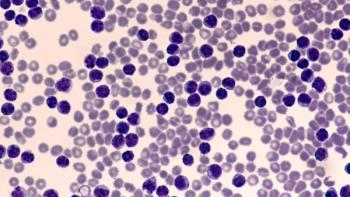
Tar-200 Plus Anti–PD-1 Therapy Shows Promising Neoadjuvant Activity in Cisplatin-Ineligible Muscle-Invasive Bladder Cancer
Andrea Necchi, MD, shared SunRISe-4 primary results demonstrating higher pathologic response and relapse-free survival rates with TAR-200 plus sacituzumab compared with checkpoint inhibitor monotherapy, with no new safety signals observed.
At the European Society of Medical Oncology (ESMO) Congress 2025, final results from the SunRISe-4 trial highlighted encouraging efficacy and safety findings for TAR-200, an intravesical gemcitabine delivery system, in combination with the anti–PD-1 antibody sacituzumab (Trodelvy; Gilead) for patients with muscle-invasive urothelial carcinoma who are ineligible for or declined cisplatin.
In an interview with Pharmacy Times, Andrea Necchi, MD, discussed key outcomes from the study, including improved pathologic complete response and relapse-free survival rates, and the potential for integrating TAR-200 into neoadjuvant treatment strategies for bladder cancer.
Q: Can you summarize the key efficacy and safety outcomes from the SunRISe-4 primary analysis, and how these results compare with current neoadjuvant standards such as cisplatin-based chemotherapy?
Andrea Necchi, MD: The SunRISe-4 trial was first presented in preliminary form at ESMO 2024 and later published in The Lancet Oncology earlier this year. It evaluated patients with muscle-invasive urothelial bladder cancer (clinical stage T2–T4a, N0, M0) who were either ineligible for or declined cisplatin-based chemotherapy.
Patients were randomized to receive 4 cycles of the intravesical gemcitabine delivery system TAR-200 combined with sacituzumab (sitrulimab)—an anti–PD-1 antibody—administered every 3 weeks, or sacituzumab monotherapy on the same schedule, before radical cystectomy and follow-up.
The primary end point was pathologic complete response (pCR). Secondary end points included pathologic downstaging, relapse-free survival, and biomarker analyses—the latter being a major focus of this year’s ESMO presentation.
In the final analysis, the pCR rate was 38% with TAR-200 plus sacituzumab compared with 24% for sacituzumab monotherapy. Pathologic downstaging occurred in more than 50% of patients receiving the combination versus 44% with monotherapy, consistent with historical checkpoint inhibitor data.
Importantly, the first relapse-free survival (RFS) results showed a 1-year RFS rate of 77% in the combination arm versus 66% with monotherapy—a 10% absolute improvement. Although the study was not powered for a formal comparison, these descriptive data suggest potential additive benefit from intravesical therapy in the neoadjuvant setting.
From a safety standpoint, no new or unexpected signals were observed compared with prior analyses. Most grade 3 to 4 adverse events were local, such as urinary tract symptoms or irritation, and were generally well managed by investigators.
Newsletter
Stay informed on drug updates, treatment guidelines, and pharmacy practice trends—subscribe to Pharmacy Times for weekly clinical insights.




















































































































































































































